Chrysanthemums have always been hotly loved by gardeners. These bright and unpretentious flowers will help create a beautiful landscape on your plot, flowerbed or flower bed. In the spring-summer period, they are invisible and inferior to the palm of chamber of the chamomile, roses, georgins and other summer plants, among which chrysanthemums are modestly peeled with green bushes. But it is worth the summer colors to fade, come autumn, like a bush chrysanthemum dismisses and gives the present riot of paints.
The beauty of this flower is that he will delight the eyes with bright colors until late autumn. The real cradle of chrysanthemum is the Far East. It was here that preference was preferred to decorate their opposition to this beautiful plant. In China, large-flowered varieties were loved, which were grown in pots. But the truly beauty of chrysanthemum melted in ancient Japan. The Japanese consider this flower with a symbol of longevity and even made it part of the emblem of their country. Next, the fashion for the cultivation of chrysanthemums came to Europe, where the methods of its cultivation and care were improved. The bush chrysanthemum is still loved in modern Japan, where the foundations of numerous temples are decorated.
Photo of chrysanthemum bush
Yellow bushes chrysanthemums
Chrysanthemum bush white
Multicolored chrysanthemum
Green bush chrysanthemum
Chrysanthemum bush in a pot
Types and varieties of chrysanthemum
Chrysanthemums like many gardeners due to the huge set of their species. They differ in height, the form of flowers, their location on the branch, etc. White chrysanthemums are divided into the following groups:
- curish chrysanthemums. Flowers have a very spectacular look due to lush petals, which completely hide the core of the flower;
- bristy or thistle-shaped bush chrysanthemums. This group of chrysanthemum is owned by the curved petals resembling the shape of the brush. Have a similar view with filament chrysanthemums;
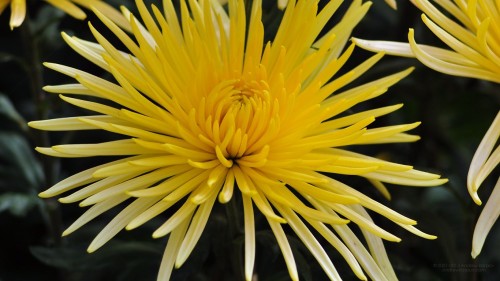
- pomponic chrysanthemums. The "terry" flower of the almost correct round form always attracts attention to its spectacular appearance;
- simple chrysanthemums or semi-world. This group of chrysanthemum has an open core, framed by one nearby petals, like a chamomile;
- angreovo-shaped chrysanthemums. After reading the name of this group, it immediately becomes clear that these chrysanthemums are very similar to the anemone. Core, compared with the previous group, more raised and lush;
- spoonful chrysanthemums. Expanding to the end of the petal, clearly resemble the shape of a spoon;
- chrysanthemum Fantazi. A relatively new group of bush chrysanthemums, which was brought from Japan. Compared with feathery chrysanthemums, chrysanthemum-fantasy are more elongated petals.
Sorts of bush chrysanthemums are a lot. One of the most popular is the Baltika (white, yellow, lime, pink), optimist (white, pink), saba chrysanthemum, Chrysanthemum Mona Lisa, green bush chrysanthemum (Galiaro Green, Green Lizard, etc.)
How bush chrysanthemum multiplies
If you are a novice gardener, and do not understand the methods of breeding colors, and in particular bush chrysanthemums, it is worth paying particular attention to this issue. After all, the success of this event depends precisely from the correctness of your actions. White chrysanthemums breed three main ways:
- Seeds.
- Cuttings.
- Dividing bush.
Depending on what method you select depends on the procedure. But even if you have no experience in any of these ways to plant chrysanthemums, you can not worry, because This flower is unpretentious and easy to grow.
Growing bush chrysanthemum from seeds
This method of cultivation of bush chrysanthemum is not the most popular among gardeners. It is worth noting that chrysanthemum grown from seeds will not always be similar to those chrysanthemums, of which these seeds were collected. Sometimes they can get better, and sometimes worse in aesthetic plan. If you want to achieve blossoms in the same year, you will have to grow flowers across seedlings. SEE seeds in January-February, so that seedlings manage to grow. In this case, your procedure will be as follows:
- Select the appropriate container for planting seeds and peat. Peat can be prepared independently, observing the proportions of peat and humus. And you can significantly make it easier for yourself and buy a finished earthy mixture for growing chrysanthemums in the store. In specialized stores you can also find a huge range of seedlings for growing seedlings.
- Fill the tanks with an earthy mixture. At the bottom of the box must be maddered drainage. It may be broken brick, clayjit or gravel. Drainage is needed in order to prevent soil moistening when watering. Then fill the capacity of pre-moistened soil.
- SEE seeds. Depending on the perennial you want to grow chrysanthemums or annuals, choose the method of laying seeds into the soil. If you grow annuals, then the seeds need to be sprinkled with an earthen layer with a thickness of about 0.5 cm. If you grow perennials, then just slightly press the seeds to the earth surface.
- Care for sowing. Proper sowing care significantly affects the quality and speed of the first germs. As soon as you planted seeds, you need to clean them out of the pulvezer, cover with glass or polyethylene. The room temperature in which there will be bins with crops, should be high enough - 23-25 \u200b\u200bdegrees Celsius. It is not worth forget about the crops: periodically check them and spray with warm water, do not allow soil drying. If you create such comfortable conditions for chrysanthemum, you will see the first sprouts after 1.5-2 weeks. Gradually pass them to the outdoor air - first open the seedlings for 1 hour, then by 2, etc. All this time, chrysanthemums must be in a bright place.
- Caring for the seedle. If the seedlings climbed too thickly, then it must be divened to separate containers, cups, etc. Land for transplanting remains the same as for sowing seeds. Rehend to the resetting process as carefully. You do not have to damage the gentle root system of still rapid plants. Better if you moisture the soil before transplanting. If you notice the "bad" plants - who did not drop the seed shell, weakened seedlings, then immediately select them, because They will not give germs in the open soil. After picking, it is possible to embarcate the plants with special solutions so that they do it better. After 1.5 months, seedlings will reach a height of 20 cm.
- Look at the open ground. Before you land your chrysanthemums into open ground, they are desirable to "harden". When a permanent temperature of 15-18 degrees is established on the street, then remove the seedlings on the glazed balcony or to a greenhouse. So, they will get more access to light and adapt to more outdoor conditions. In early June, you can land the bush chrysanthemums on their permanent place in the open soil.
We looked at the method of growing bush chrysanthemum seeds through seedlings. But, if you grow an annual plant, you can sow seeds immediately into open ground. Usually do it in May. Of course, in this case, chrysanthemums will bloom only at the end of summer.
The method of sowing seeds immediately in Earth is as follows:
- In the ground, we make wells at a distance of 20-25 cm from each other, shed them with warm water.
- To each well put on 2-3 seeds and slightly sprinkle the earth.
- We cover the sowing of the garden film, which will need to be removed after the appearance of germs.
- After the seeds reached 10 cm of height, select the strongest plant in each well and remove the rest.
Growing a bush chrysanthemum from a cutter
Grow chrysanthrom from the cutter does not represent much difficulty. That is why this method is common most often. You can simply inspire a side escape from a bouquet in a vase and put it in the ground. Very soon he is rooted.
You can buy an already ready rooted stalk, in the spring to plant it in the ground, giving it a good root to him, and then get over. Like an adult plant, rooted cuttings like a warm and bright place, do not tolerate the convergence. In order for in the future, bush chrysanthemum had a beautiful shape, rooted cuttings, it is necessary to inspire the top.
Growing bush chrysanthemum by dividing bush
White garden chrysanthrom can be raised by the way of dividing the bush. It is also like reproduction with cuttings, less troublesome method of growing chrysanthemums, compared with seeds. In addition, the procedure for dividing the chrysanthemum bush has a health value for this flower. If it is not possible to separate the bushes (approximately 11 times every 3 years), then chrysanthemums lose their aesthetic attractiveness - the flowers become not so lush, the bush itself degenerates and becomes rare. You can ask for familiar, neighbors who already have chrysanthemums, part of the bush. Such plots are often sold in the markets. Separate bush is better in spring. Just dig it, divide on 2-3 parts (depending on the density of the bush) and plant these parts immediately into the open soil.
Secrets of growing perennial bush chrysanthemum
Each gardener growing bush chrysanthemums, dreams of ideal, striking his puffs of the bushes. Although Chrysanthemum is not a "picky" flower, but he still requires some mandatory conditions. If you tried to create them, then your garden will be shot with bright colors and please the imagination. What does the long-term garden chrysanthemum love? First, soil and lighting. Choose a fairly light dry place on your site, which must be protected from the wind. Chrysanthemum does not like drafts. Always carefully treat garden chrysanthemum watering. Do not overcoat the soil! And of course, fertilizers will help you achieve ideal perennials. So, you can allocate the following secrets and nuances of growing bush garden chrysanthemums:
- the illuminated area protected from the wind and from the midday heat;
- well-drained weakness soil;
- in the spring, before the flowering period, chrysanthemums watered quite abundantly, but not overcoating the soil. Since the appearance of flowers, watering reduce, bringing to a minimum to the active phase of flowering;
- it is necessary to feed chrysanthemums regularly - 1 time in 2 weeks. Need both mineral and organic fertilizers;
- sharing a bush for about 1 time every 3 years, to stroke for the winter.
How to transplant and cut a bush chrysant
As mentioned above, the bush chrysanthemum requires the division of the bush at least once every three years, but this can be done every year in April. This plant also loves when he is changing the landing site in 5 years. To improve the aesthetic type of chrysanthemum bushes in transplantation, you need to share:
- Dig a bush.
- Separate young shoots.
- Separate separated shoots in pre-prepared wells at a distance of 30-40 cm.
- To form a beautiful bush crown, shoots above 15 cm piping from above.
For the formation of a beautiful shape of a bush, a traditional trimming is used. Its meaning is that long shoots above 15 cm are cut off. Thus, the enhanced growth of new side shoots is stimulated, which will give a pomp and chrysanthemum dense. And with the plug, you can achieve large flowers - remove the side buds immediately after their formation.
How are bush garden chrysanthemums
The question of wintering chrysanthemum always worries novice gardeners. After all, if you managed to grow chic bushes of these colors, which attracted the attention of passersby and pleased the eye, then you will want to save them for the next season. To do this, it is necessary to properly organize the conditions of wintering for chrysanthemums. Even the most cold-resistant varieties will not be able to fall independently. To save your colors, after the end of flowering, they need to trim down the root, dip the bush and cover the layer of leaves. But not all varieties of chrysanthemums in this way. Large-flowered chrysanthemums are necessary after trimming under the root to dig out of the ground. This earthen comes gently shift into the prepared container and sprinkle with a damp soil. Keep chrysanthemums in this form you need at a temperature of 0-5 degrees Celsius. If you suddenly noticed that the com does, then slightly water it from time to time.
Grow a bush chrysanthmant without pests and struggle with diseases
A beautiful magnificent chrysanthemum bush can be raised if you are armed with knowledge about the pests of this plant and diseases that can hit it. If you know the enemy "in the face", then half of the way to victory has already been passed. What are the basic and most common pests can settle on your chrysanthemum? Let's consider in more detail.
- Aphid. The most common insect that can destroy the plant. These little bugs can dwell with whole colonies on chrysanthemum. Their favorite place is the reverse side of the leaves. Depending on the degree of damage to the plant, the treatment method is selected. If you have discovered several bugs, i.e. One colony, then you can simply cut the amazed leaflets. If the insects live almost all parts of chrysanthemum, it is not necessary to do without special drugs (actuar, Calypso, confidor, Aktellik, etc.). If you do not struggle with soot, the plant can perish. These insects suck the juice from the leaves and stems, thereby the angry growth of chrysanthemum.
- Chrysanthemate nematode. Nematodes are small round worms. They are so small that they are seriously noticed by the naked eye. But the results of their livelihoods are quite noticeable. Blesley stains begin to appear on the leaves in chaotic order, which then becomes brown. Dist dries, twisted and disappears. Chervi begins to hit chrysanthemum bush from below, gradually getting up. Buds affected by nematodes can even bloom, but these inflorescences will be ugly and unsightly. Sick bushes is better to burn, and for the prevention to process the bushes with a solution of phosphamide.
- Major beetle larvae. This pest lives in the soil and loves the roots of bush chrysanthemums. He sucks juice from the roots, and, as a result, the bush dies entirely. To prevent it, use Bazudin to process insecticide.
- Sluting Pennie. This is perhaps one of the most "spectacular" pests of chrysanthemum. He likes to hit chrysanthemum green bushes. Cozy, sitting on one of the shoots whirling Pennie is covered with a layer of white foam. She sucks juice from the plant, angry it and not giving fully growing.
Among the common diseases, chrysanthemums are presented:
- Gray rot. Chrysanthemum leaves amazed with gray rotting are covered with brown spots, become sluggish and soft. With excessive humidity, mold can appear. The best way to combat the gray rot - timely remove patients with leaves, follow the level of humidity. There are also special preparations from gray rot for chrysanthemums (purecott, funds, the EUPares, etc.).
- Viruses. In case of chrysanthemums, viruses are glad of the leaves, their discoloration, there are growth anomalies, lesions of flowers, etc. The only right way is to remove the plant.
- Rust leaves. Rust leaves manifests itself as emerging small spots resembling burns. They can be greenish, light yellow or even pink shade. These specks have a convex surface from the inside of the sheet. Over time, the leaves begin to twist and completely die away. To effectively combat rust, it is necessary to remove the affected leaves in a timely manner and to treat chrysanthum with copper-containing fungicides, Fundazole, to focus with fertilizers.
If you have a desire to grow chrysanthemums, you love everything related to gardening, then you will definitely get gorgeous bushes chrysanthemums. After all, no wonder these flowers are called "Garden Gold"! They will decorate and the highlight of your flower garden.

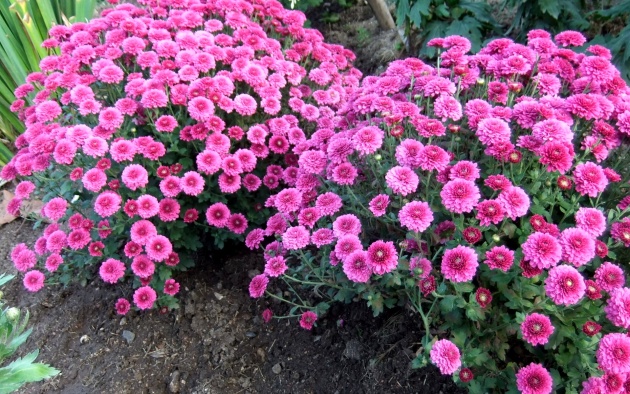
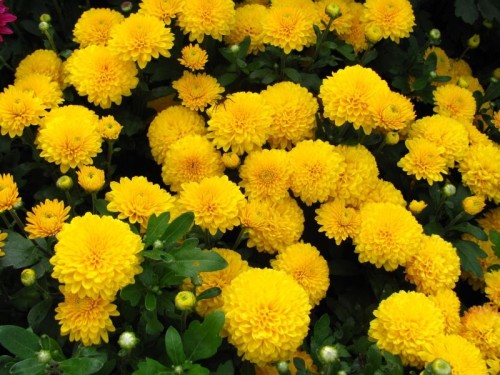
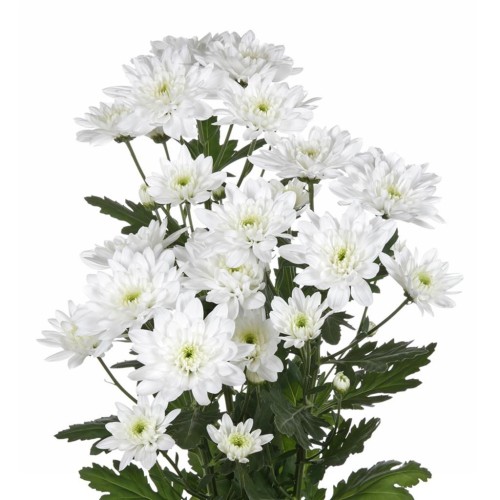
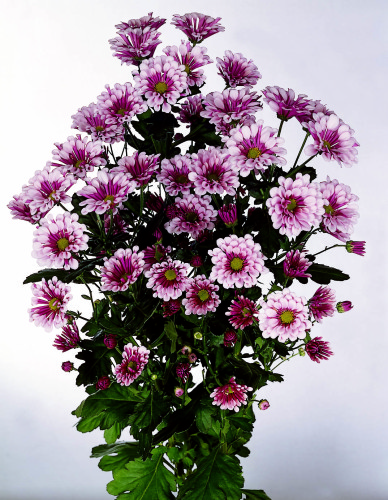
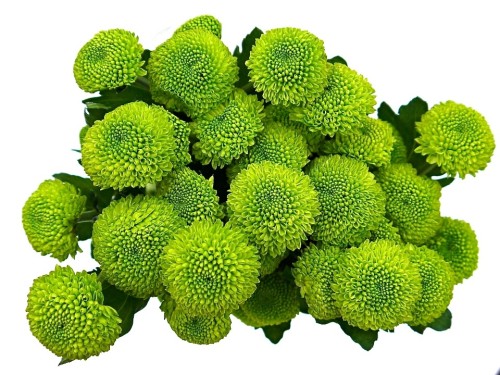
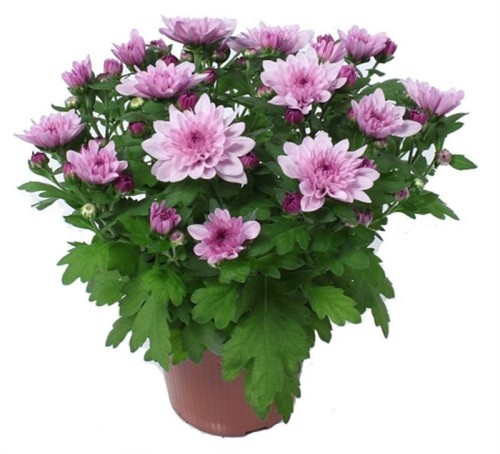
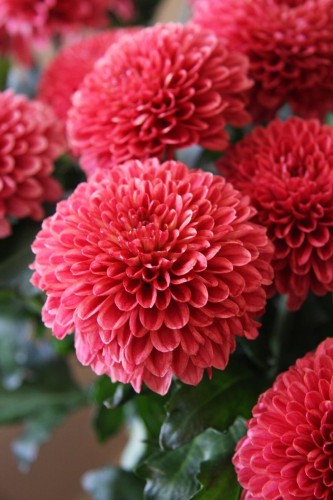
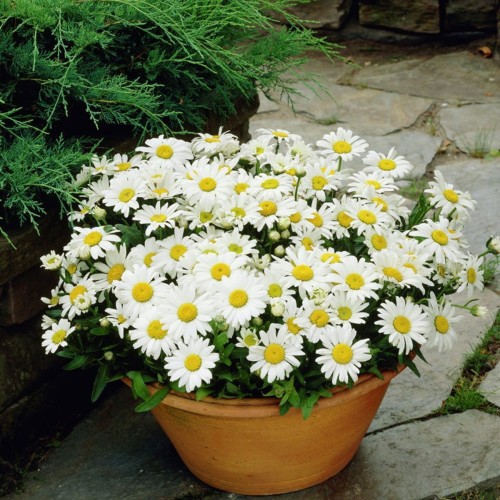
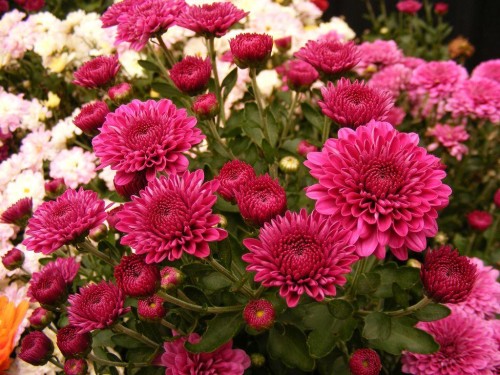
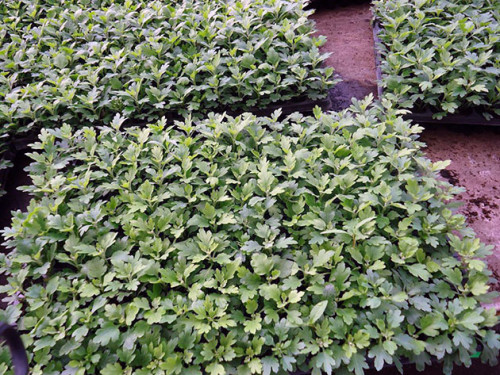
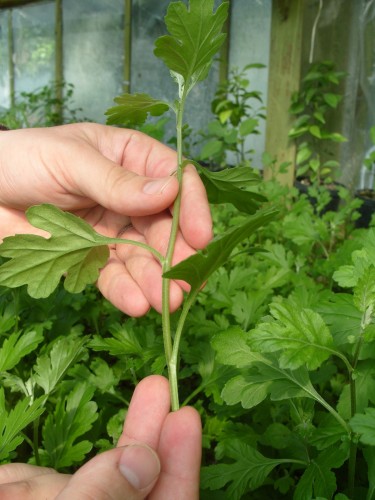

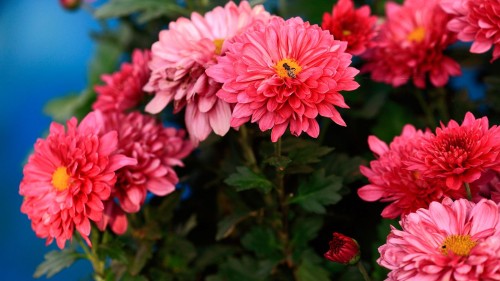













 Start a discussion ...
Start a discussion ...